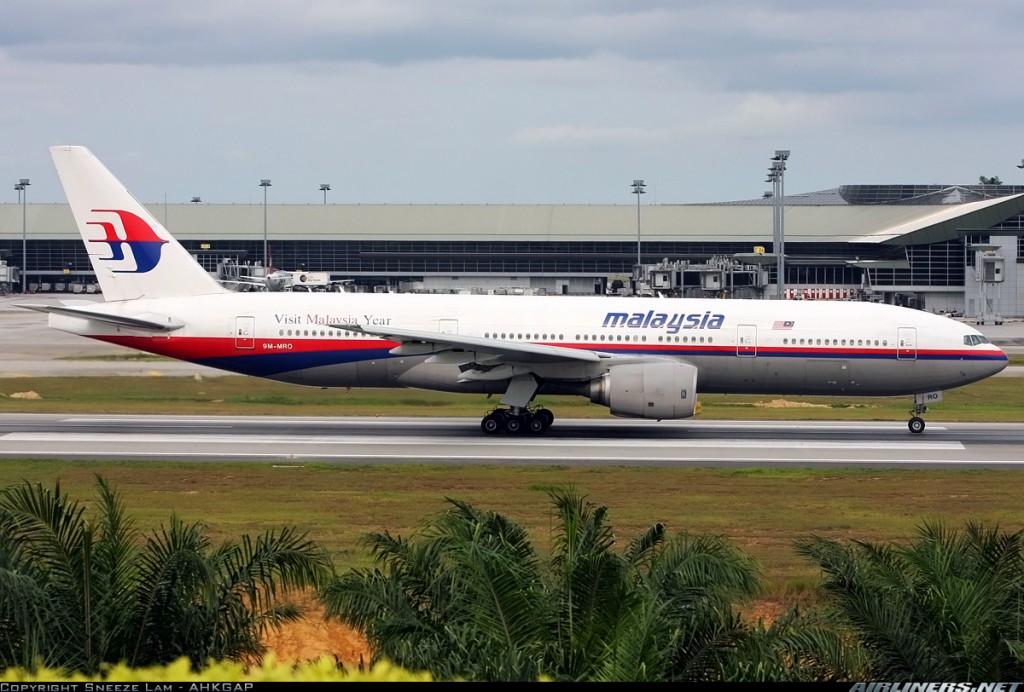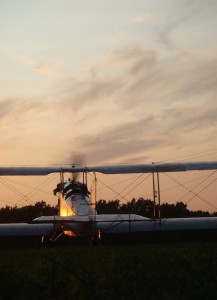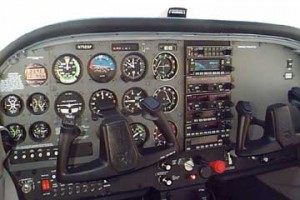A Boeing 777 is not exactly a small aircraft. I’ve been known to forget where I parked my car in the lot when I leave the grocery store and walk around like a fool until I find it. I could somewhat understand that situation with a Cessna 172, as it is not much bigger than a car.
But a 777 is. This kind of aircraft seats from 301 to 440 people (my car seats 5). So by that statistic alone, a 777 is equivalent to between 60 and 88 Volvo V70XCs. A 777 holds 45,220 gallons of fuel – I regularly put 15 gallons of gas in the Volvo, so a 777 is equal to more than 3000 of them by that metric. Last but not least, a 777 weighs up to 656,000 lbs. My Volvo, well, actually, sometimes I think my Volvo weighs that much, too, so this is probably not the best comparison.
I’d say that it ought to be impossible to “misplace” a Boeing 777, but I have seen firsthand that it is absolutely possible to “lose” large business jets. In the six years I worked at [large business jet company], I personally received calls from FBOs telling us one of our jets was “in the back of the hangar” and had been there for weeks (or months). At a completely different airport than our top-of-the-line, proprietary software told us it was. So I know it is possible to lose a jet – probably even a 777. But eventually they are found.
But let’s get down to the meat of the MH370 mystery, shall we? A 777 on a filed flight plan and in fine weather suddenly turns off the planned route, then disappears off radar. All about 40 minutes into the flight. This is pretty much all we really know.
But what we know and what we speculate are mutually exclusive, aren’t they?
Unfortunately, since the horrors that occurred on September 11, 2001, the first thing on everyone’s mind is “terrorism.” And that is not necessarily the worst thing. The world changed on September 11, 2001, and we all have to look at events through that new frame. Karlene Petitt wrote an incredibly popular blog post about her speculation that the crew was compromised, possibly by the travelers using stolen passports, and that the captain or co-pilot heroically pushed the nose over and sacrificed the aircraft and all on board to the depths rather than allow MH370 to be used as a weapon.
This is not an uncommon thought, and very well might be the case. But if, indeed, that were the case, why haven’t we found the remains yet? Wouldn’t the pilot have done so as soon as he knew the terrorists were onboard and attempting to take control of the airplane? That would have been right around the time of the turn off course, and that area has been scoured already, hasn’t it?
Another theory is Mark L. Berry‘s – who says he is “worried that the first terrorist-controlled weapon of mass destruction (maybe biological, maybe chemical, maybe nuclear) is now being married with the Boeing 777 in some remote airfield.” His theory is that the terrorists were successful in comandeering the aircraft, and that they flew it somewhere within seven hours or so to allow it to be loaded up with weapons of some sort so that the plane can be used as a weapon itself, a la 9/11/01, only with explosives on board instead of unwitting passengers, causing potentially much more destruction.
Eric Auxier (Cap’n Aux) uses Occam’s Razor to come to another, less paranoid and more likely explanation: Lithium batteries now known to be on board being shipped overheat and catch fire in the forward cargo bay, burning the avionics bay and causing a mass communication/electronics failure, and possibly an explosive decompression and explaining the turn off course. In the end, he believes the plane flew on autopilot (until autopilot failed along the rest of the avionics), and the plane simply continued on that heading (approximately) until it ran out of fuel and ultimately crashed in the ocean.
I tend to lean toward the more likely mechanical failure, such as Cap’n Aux describes. Some sort of fire engulfes the avionics and cockpit, incapacitating the pilots, who were able to start emergency procedures and turn toward the nearest safe haven (Palau Langkawi – a 13,000 foot runway with an approach over water and no significant obstacles) before being overcome with smoke or fire or both. Regardless of the cause or source of the fire, the results are the same: electronic/avionics failures, and an airplane essentially flying itself until fuel ran out and it crashed.
Similar crashes, while not common, are certainly not unheard of. The fairly recent (in aviation terms) crash of Payne Stewart’s Learjet in October of 1999 comes to mind – the plane lost cabin pressurization, the crew was incapacitated due to hypoxia (for some reason, they did not – or were not able to – don their oxygen masks), and the plane flew on its last heading until running out of fuel and crashing. In the case of the Lear in 1999, there was no fire so avionics remained functional, but think if there was a fire first – the first thing you do as a pilot if electrical fire is even suspected is TURN OFF ALL ELECTRICAL EQUIPMENT! Yes, this means comm, transponder, etc. If, subsequently, cabin pressure is lost, now you really have two emergencies on your hands, with different checklists and different priorities, but neither more or less dangerous in your situation. What do you do? With smoke, fire, or depressurization, you have a precious few seconds to get those masks on before you might not be functional – and with multiple emergencies, that slight confusion or pause to prioritize might have been all that was necessary to bring this situation to fruition.
Maybe it’s my overriding hope and faith in humanity that makes me lean toward to the mechanical failure / fire possibility before I seriously consider terrorism – or maybe it’s my fear of the latter as a possibility – but I hope it was simply a failure of systems in what is an incredibly, almost impossibly complex piece of equipment that is a Boeing 777, and not a conspiracy to hijack one of the largest airliners of the current day for use as a weapon (successfully or not), even though I know full well there are people in the world whose mission in life is to sow and breed fear in others.
Just the fact that our minds immediately consider that as a likely option means that the terrorists on September 11, 2001 have won in instilling that fear in our lives. At least a little. And that is not okay.
Tailwinds,
Andrew

 Last month, a pioneering group of
Last month, a pioneering group of  I teach students to do preflight in 3 steps:
I teach students to do preflight in 3 steps: